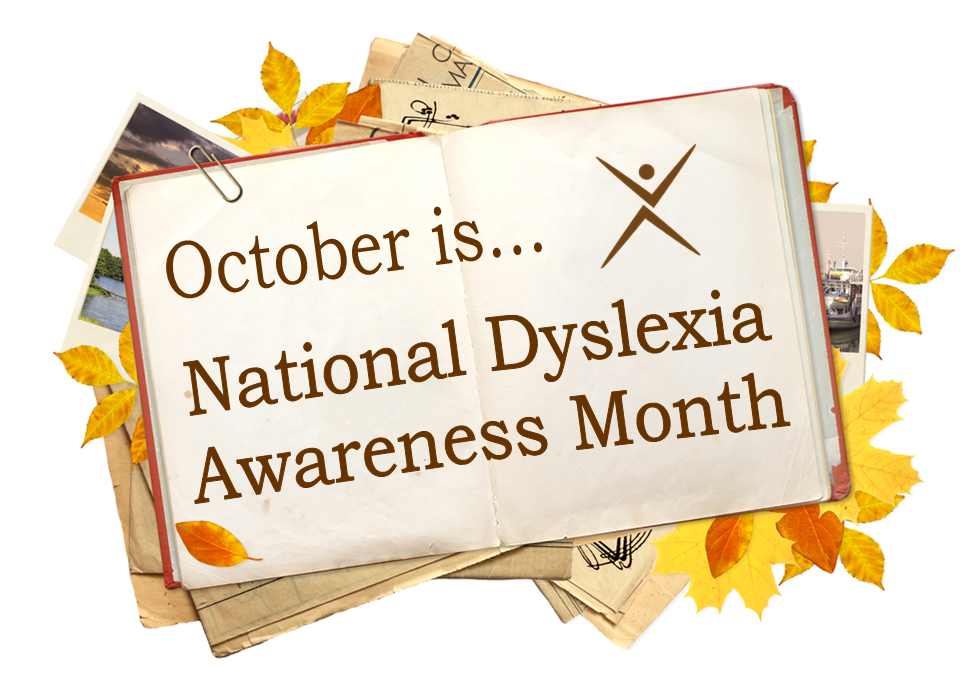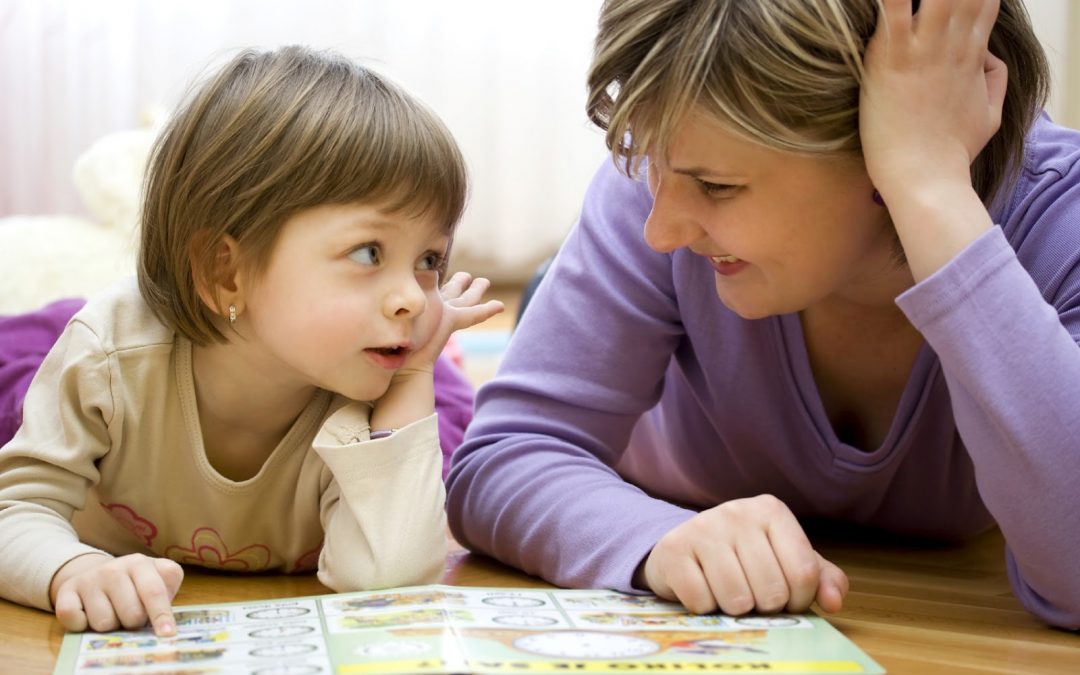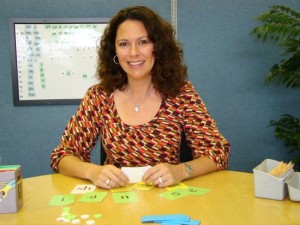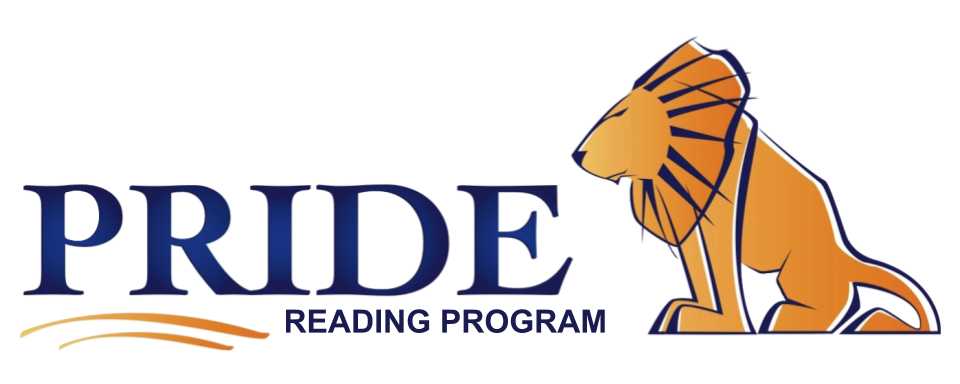
by PRIDE Reading Program Admin | Sep 29, 2017 | A PRIDE Post, Dyslexia
This October is National Dyslexia Awareness Month, and PRIDE Learning Centers is helping to spread the word!
Did you know that Dyslexia is estimated to affect some 20-30 percent of our population? This means that more than 2 million school-age children in the United States are dyslexic! We are here to help.
What is Dyslexia?
Although children with dyslexia typically have average to above average intelligence, their dyslexia creates problems not only with reading, writing and spelling but also with speaking, thinking and listening. Often these academic problems can lead to emotional and self-esteem issues throughout their lives. Low self-esteem can lead to poor grades and under achievement. Dyslexic students are often considered lazy, rebellious or unmotivated. These misconceptions cause rejection, isolation, feelings of inferiority, and discouragement.
The central difficulty for dyslexic students is poor phonemic awareness. Phonemic awareness is the ability to appreciate that spoken language is made up of sound segments (phonemes). In other words, a dyslexic student’s brain has trouble breaking a word down into its individual sounds and manipulating these sounds. For example, in a word with three sounds, a dyslexic might only perceive one or two.
Most researchers and teachers agree that developing phonemic awareness is the first step in learning to read. It cannot be skipped. When children begin to learn to read, they first must come to recognize that the word on the page has the same sound structure as the spoken word it represents. However, because dyslexics have difficulty recognizing the internal sound structure of the spoken word to begin with, it is very difficult for them to convert the letters of the alphabet into a phonetic code (decoding).
Although dyslexia can impair spelling and decoding abilities, it also seems to be associated with many strengths and talents. People with dyslexia often have significant strengths in areas controlled by the right side of the brain. These include artistic, athletic and mechanical gifts. Individuals with dyslexia tend to be very bright and creative thinkers. They have a knack for thinking, “outside-the-box.” Many dyslexics have strong 3-D visualization ability, musical talent, creative problem solving skills and intuitive people skills. Many are gifted in math, science, fine arts, journalism, and other creative fields.
Symptoms of Dyslexia
Preschoolers
- Late talking, compared to other children
- Pronunciation problems, reversal of sounds in words (such as ‘aminal’ for ‘animal’ or ‘gabrage’ for ‘garbage’)
- Slow vocabulary growth, often unable to find the right word (takes a while to get the words out)
- Difficulty rhyming words
- Trouble learning numbers, the alphabet, days of the week
- Poor ability to follow directions or routines
- Does not understand what you say until you repeat it a few times
- Enjoys being read to but shows no interest in words or letters
- Has weak fine motor skills (in activities such as drawing, tying laces, cutting, and threading)
- Unstable pencil grip
- Slow to learn new skills, relies heavily on memorization
School Age Children
- Has good memory skills
- Has not shown a dominant handedness
- Seems extremely intelligent but weak in reading
- Reads a word on one page but doesn’t recognize it on the next page or the next day
- Confuses look alike letters like b and d, b and p, n and u, or m and w.
- Substitutes a word while reading that means the same thing but doesn’t look at all similar, like “trip” for “journey” or “mom” for “mother.”
- When reading leaves out or adds small words like “an, a, from, the, to, were, are and of.”
- Reading comprehension is poor because the child spends so much energy trying to figure out words.
- Might have problems tracking the words on the lines, or following them across the pages.
- Avoids reading as much as possible
- Writes illegibly
- Writes everything as one continuous sentence
- Does not understand the difference between a sentence and a fragment of a sentence
- Misspells many words
- Uses odd spacing between words. Might ignore margins completely and pack sentences together on the page instead of spreading them out
- Does not notice spelling errors
- Is easily distracted or has a short attention span
- Is disorganized
- Has difficulties making sense of instructions
- Fails to finish work on time
- Appears lazy, unmotivated, or frustrated
Teenagers
- Avoids reading and writing
- Guesses at words and skips small words
- Has difficulties with reading comprehension
- Does not do homework
- Might say that they are “dumb” or “couldn’t care less”
- Is humiliated
- Might hide the dyslexia by being defiant or using self-abusive behavior
Adults
- Avoids reading and writing
- Types letters in the wrong order
- Has difficulties filling out forms
- Mixes up numbers and dates
- Has low self-esteem
- Might be a high school dropout
- Holds a job below their potential and changes jobs frequently
Treatment
The sooner a child with dyslexia is given proper instruction, particularly in the very early grades, the more likely it is that they will have fewer or milder difficulties later in life.
Older students or adults with dyslexia will need intensive tutoring in reading, writing and spelling using an Orton-Gillingham program. During this training, students will overcome many reading difficulties and learn strategies that will last a lifetime. Treatment will only “stick” if it is incorporated intensively and consistently over time.
Students who have severe dyslexia may need very intensive specialized tutoring to catch up and stay up with the rest of their class. This specialized tutoring helps dyslexic students become successful in reading, writing, spelling, grammar, and vocabulary. It also will help them with math, and word problems. Fortunately, with the proper assistance and help, most students with dyslexia are able to learn to read and develop strategies to become successful readers.

Karina Richland, M.A., developed the PRIDE Reading Program, an Orton-Gillingham program for struggling readers, based on her extensive experience working with children with learning differences over the past 30 years. She has been a teacher, educational consultant and the Executive Director of PRIDE Learning Centers in California. Please feel free to email her with any questions at info@pridelearningcenter.com.

by PRIDE Reading Program Admin | Feb 17, 2017 | A PRIDE Post, Phonological Awareness
Learning to read is a gradual and sequential process that is developed with explicit instruction and exposure. In the late preschool years, children begin the reading process by listening to stories and chanting nursery rhymes so that they can hear the similarities and differences in the sounds of words. Through this process, the children begin to manipulate and understand sounds in spoken language and proceed by taking the next step of making up rhymes and words on their own.
As the children get older, they begin to learn the names of the letters in the alphabet and the different sounds each letter represents. Subsequently, they begin to write the letters and numbers that they already recognize by their shapes. Finally, the children associate the letters of the alphabet with the sounds of the words they use when they speak. At this point, they are on their way to learning to read!
The key to the entire reading process is phonological awareness. This is where a child identifies the different sounds that make words and associates these sounds with written words. A child cannot learn to read without this skill. In order to learn to read, children must be aware of phonemes. A phoneme is the smallest functional unit of sound. For example, the word ‘bench’ contains 4 different phonemes. They are ‘b’ ‘e’ ‘n’ and ‘ch.’
Some examples of phonological awareness tasks include:
1. Identifying rhymes – “Tell me all of the words you know that rhyme with the word BAT.”
2. Segmenting words into smaller units, such as syllables and sounds, by counting them. “How many sounds do you hear in the word CAKE?”
3. Blending separated sounds into words – “What word would we have if we blended these sounds together: /h/ /a/ /t/?”
4. Manipulating sounds in words by adding, deleting or substituting – “In the word LAND, change the /L/ to /B/.” “What word is left if you take the /H/ away from the word HAT?”
Through phonological awareness, children learn to associate sounds and create links to word recognition and decoding skills necessary for reading. Research clearly shows that phoneme awareness performance is a strong predictor of long- term reading and spelling success. In fact, according to the International Reading Association, phonemic awareness abilities in kindergarten (or in that age range) appear to be the best single predictor of successful reading acquisition.
Learn more about the New PRIDE Reading Program
_________________________________________________________________________________________________
Karina Richland is the Founder and Director of Pride Learning Centers, located in Los Angeles and Orange County. Ms. Richland is a certified reading and learning disability specialist. Ms. Richland speaks frequently to parents, teachers, and professionals on learning differences, and writes for several journals and publications. You can visit the PRIDE Learning Center website at: www.pridelearningcenter.com

by PRIDE Reading Program Admin | Oct 23, 2016 | A PRIDE Post, Reading Fluency
Once a child is able to decode and recognize words in print, it is crucial that they also gain an ability to read smoothly and at an efficient pace. Stumbling and hesitating over words undermines reading comprehension given that by the time the child gets to the end of a sentence he or she will have completely forgotten what was at the beginning of the sentence!
How do you measure reading fluency in your child?
- Ask the child to read a grade level passage that they have never seen or read before.
- Using a timer have him or her read this text for one minute.
- While reading the passage, tally the errors the child makes while reading.
- Stop the child after one minute. Count the number of words read in the minute and subtract any errors made by the child. For example: if he or she read 120 words in a minute and made five errors then the child’s reading fluency rate is 115.
- Use the chart below to determine if your child’s reading rate is on target.
Mean Words Correct Per Minute “Targets” for Average Students in Grades One through Eight
| Grade | Fall Target | Winter Target | Spring Target |
| | | | |
| 1 | Not applicable | 20 | 50 |
| 2 | 50 | 70 | 90 |
| 3 | 70 | 90 | 110 |
| 4 | 95 | 110 | 125 |
| 5 | 110 | 125 | 140 |
| 6 | 125 | 140 | 150 |
| 7 | 125 | 140 | 150 |
| 8 | 130 | 140 | 150 |
Johns, J. and Berglund, R. (2006). Fluency strategies and assessments. Dubuque, IA: Kendall/Hunt Publishers.
How do you determine a child’s reading level to test for fluency?
Probably the easiest ways to determine if a book is at an appropriate reading level for your child is the Five Finger Rule. Have the child begin reading a chapter, and put down one finger each time he struggles with a word. If he reaches the end of the page before you get to five fingers, the book is written at a comfortable level for independent reading.
What can you do to increase and improve your child’s reading fluency?
The very best way is through practice, both through oral and silent reading.
One approach to practicing reading fluency is for the child to repeatedly read the same passage or text either with a parent or tutor three to four times. Rereading text gives the child multiple opportunities to read unfamiliar words. After repeated reading, those words become familiar. The child should practice rereading aloud texts that are reasonably easy for them and at their reading level and include words that the child already knows and can decode easily. A text is considered at reading level if the child can read it with 95% accuracy. This text should also be relatively short consisting of 50-200 words. First, the parent or teacher reads the text aloud to the student. Then the student reads the same passage to the adult or chorally with the adult. Finally, the student rereads the passage again independently.
Reading frequently will also improve reading fluency since reading is a skill that improves with practice. Children can improve their reading fluency by reading independently each day for at least 20 minutes. Again it is important that the child read a book or text that is at their grade level or slightly below their grade level. Children should be encouraged and allowed to read a book of their choice – even if this doesn’t involve classic novels for their independent reading. For gaining fluency, quantity is more important than quality. Whenever possible, use their interests to guide their reading choices and give them some power in making decisions about what to read.
Memorizing Dolch sight words is another method to improve reading fluency in children. By memorizing common words like “the”, “said”, “what”, “you”, the child will read texts and stories more fluently. Many of these words are in almost anything they read. Readers will have more experiences of success if they know these words. Dolch words are service words; they give meaning and direction, which are necessary for understanding sentences.
Model good reading for your children. Share what you read with them or read what they are reading. Have discussions and talk to them about the things you find important in what you read and why. Parents and teachers need to read themselves and read in front of their children and students. Children will imitate you and will be more likely to read and read well in a house and classroom filled with all kinds of interesting books, magazines and texts.
Karina Richland is the Founder and Director of PRIDE Learning Centers, located in Los Angeles and Orange County. Ms. Richland is a certified reading and learning disability specialist. Ms. Richland speaks frequently to parents, teachers, and professionals on learning differences, and writes for several journals and publications. You can reach her by email at karina@pridelearningcenter.com or visit the PRIDE Learning Center website at: www.pridelearningcenter.com

by PRIDE Reading Program Admin | May 8, 2016 | A PRIDE Post, Reading Skills
It is critical to identify a child’s reading problems before he or she fails. Even some children whom one might suspect do not need early assessment and monitoring should have it just the same. Some exceptionally bright children, for example, may learn to read early on and just skip over learning phonologic skills. These children memorize a lot of words very easily and quickly build a large reading vocabulary. Because these children are simply memorizing words without learning how to analyze them and break them apart, invariably there will come a point in time when they cannot decipher new, relatively long words, especially technical words, as in the sciences (Herbivore, Polynomial, Photosynthesis), or names of people or places in history or around the world (Picasso, Timbuktu, Kathmandu).
Without a foundation in phonological skills, these children will not have any strategies to deal with them. It is therefore best to ensure that all children’s basic phonologic skills are assessed right at the beginning and that they receive early and intensive instruction if necessary.
Here is a checklist to help you determine where your child is on the path to reading by the end of kindergarten.
- Knows that spoken words come apart and that letters represent these sounds.
- Easily names the letters of the alphabet, both uppercase and lowercase.
- Writes the letters of the alphabet.
- Can sound out the letters of the alphabet – both uppercase and lowercase.
- Can decode simple sound matches.
- Can decode simple 3 and 4 letter words.
- Uses invented spellings.
- Recognizes some common sight words.
- Knows about print conventions – reading from left to right, from the top of the page to the bottom.
- Has a growing vocabulary
- LOVES to read and looks forward to reading out loud.
First grade is one of the most important for a child on the road to reading. This is the crucial year where hopefully your child has broken the reading code. First grade builds on the foundation provided in kindergarten. Most children enter first grade ready to read. They leave first grade as “real readers.” Keep in mind that these major accomplishments don’t occur by chance; they are only made possible by well -structured and systematic reading instruction. If your child has the above-mentioned skills, then he or she is off to a running start in reading!
Learn more about the New PRIDE Reading Program
________________________________________________________________________________________________________

Karina Richland, M.A. is the Founder and Director of Pride Learning Centers, located in Los Angeles and Orange County. Ms. Richland is a certified reading and learning disability specialist. Ms. Richland speaks frequently to parents, teachers, and professionals on learning differences, and writes for several journals and publications. You can reach her by email at karina@pridelearningcenter.com or visit the Pride Learning Center website at: www.pridelearningcenter.com

by PRIDE Reading Program Admin | Feb 15, 2016 | A PRIDE Post, Learning Disabilities, Reading Comprehension, Reading Skills
Reading is a highly complex, integrated activity that daunts as many as 33 percent of the population. Many children become proficient readers regardless of how they are taught. However, for children who experience difficulty learning to gain meaning from print, reading must be systematically and carefully taught. Mastering the following components of the reading process is essential if students are to become proficient readers.
Appreciation and enthusiasm for reading
It comes as no surprise that children who are passionate about reading are more skillful readers. Reading is more exciting to students when they are:
Read to frequently
Allowed to choose their reading material
Exposed to a wide variety of interesting reading materials
Phonemic awareness
Successful reading depends upon understanding that words are composed of individual sounds. Children need direct teaching in the skills of breaking words into their component sounds and in blending individual sounds together into words. Phonemic awareness is one of the most important skills upon which early reading depends. Children who have poorly developed phonemic awareness skills are at great risk for becoming poor readers.
Phonics and Decoding
Letters of the alphabet are a code representing the sounds in words. Reading involves “decoding” or translating written words into their spoken equivalents. The early stage of decoding instruction emphasizes the correspondence between individual letters or pairs of letters (such as “oa”) and the sounds they represent. Later reading instruction stresses rapid identification of larger units such as syllables. Identifying larger phonetic elements is termed structural analysis. Once a student learns the correspondence between sounds and print, he or she has become a proficient decoder.
Fluent, Automatic Reading of Text
However, in order to become an efficient reader, the decoding process must become fast and accurate. When decoding is efficient, attention and memory processes are available for comprehending what is being read. Reading fluency training is vital for strengthening a student’s comprehension skills. Children should have ample practice reading material that is not difficult for them to decode. This level is referred to as the “independent reading level.” Frequent reading of material at a child’s independent reading level builds automatic word recognition and frees up a child’s mental abilities for comprehension.
Background Knowledge
Comprehension depends heavily on a student’s knowledge of the world. Therefore, the skill of reading comprehension begins to develop long before children enter school. Children who have more experiences of all types, have more background knowledge upon which to base their understanding of written material. Parents help their child develop reading skills when they visit the museum, the park and even the store. Parents and teachers should also read to students in order to help them create a stockpile of information that will facilitate reading comprehension. The best reading instruction teaches a student to access background knowledge while reading.
Vocabulary
Comprehension depends on having a large vocabulary. Children who read widely learn word meanings at a faster rate than children whose reading is more limited either in scope or quantity. During their school years, children should be learning several thousand new words per year. Most of these words are learned by reading.
Written Expression
Reading and writing are two sides of the same coin. Effective reading instruction must include training in expressing one’s thoughts in writing. Children should be given daily practice in organizing and expressing their knowledge through writing. This builds their ability to decode and comprehend the thoughts of other writers.
The key to helping students who experience difficulty in learning to read is to identify a student’s specific reading problems and devise programs which capitalize upon a student’s unique learning strengths. A curriculum that focuses on specific, appropriate, and practical learning strategies will best help students become proficient, efficient and independent readers.
An appropriate literacy goal for all students should be that each is fully able to use reading as a springboard for independent, critical thought and expression. Reading fuels the highest levels of the thinking process. Good readers are armed with tools to become strong thinkers.
Learn more about the New PRIDE Reading Program
________________________________________________________________
Dr. Kari Miller is a board certified educational therapist and director of Miller Educational Excellence, a full-service educational therapy facility in west Los Angeles.
You can visit her website at www.MillerEducationalExcellence.com or email her at klmiller555sbcglobal.net







